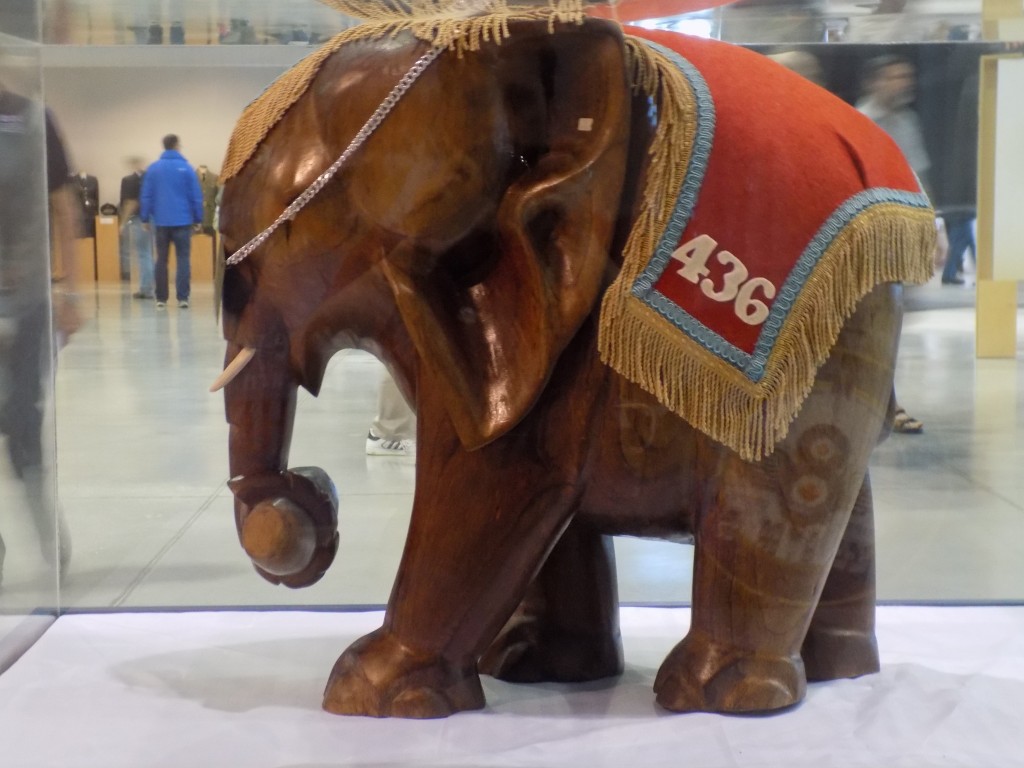Ad Astra: honoring my Canadian Air Force family
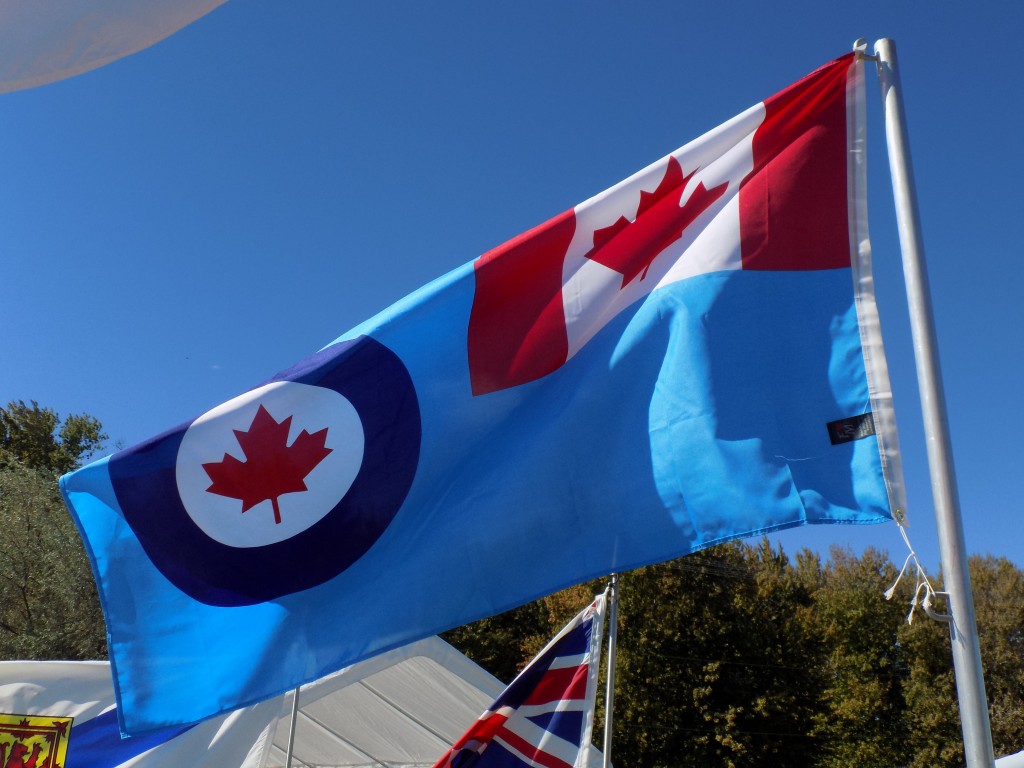
The Blue Ensign of the Royal Canadian Air Force. Before the maple leaf flag was adopted in 1965, the flag in the top right would have been a British Union Jack. The circle with the red maple leaf inside is called the roundel. Photo by James Morgan
I’m not really a militaristic person, but I have a soft spot in my heart for the air force, especially the Royal Canadian Air Force (RCAF), because it’s a big part of my family. My grandfather (Papa) Sergeant Reginald “Reg” Chislett served in the RCAF from 1952 to 1977, mostly as a Flight Engineer aboard C-130 Hercules transport aircraft on the 436 Squadron. My grandmother (Nanny) Margaret (nee Hawkins) served for 18 months in 1953-1954—just long enough to meet my grandfather and get married. Canadian Forces Base Trenton in Ontario is home to the National Air Force Museum of Canada. Almost every military aircraft the RCAF has ever used is on display on the museum grounds. The paths through the outdoor display area are lined with over 11,000 stones engraved with the names of people who have served in the RCAF or other allied air forces. They’re called Ad Astra Stones in reference to the original Latin motto of the RCAF Per ardua ad astra “Through adversity to the stars,” (the current motto is Sic itur ad astra “Such is the pathway to the stars”).
When Papa turned 80, our family purchased one of the stones for him as a gift. He died in January this year at age 86. Nanny turned 85 this past May and we purchased a stone for her as a birthday gift too. The annual Ad Astra Ceremony was held at the museum on September 24 for the over 200 new stones added this year. My family traveled to Trenton for the dedication of my grandmother’s stone and to honor my grandfather whose date of death was recently added next to his name.
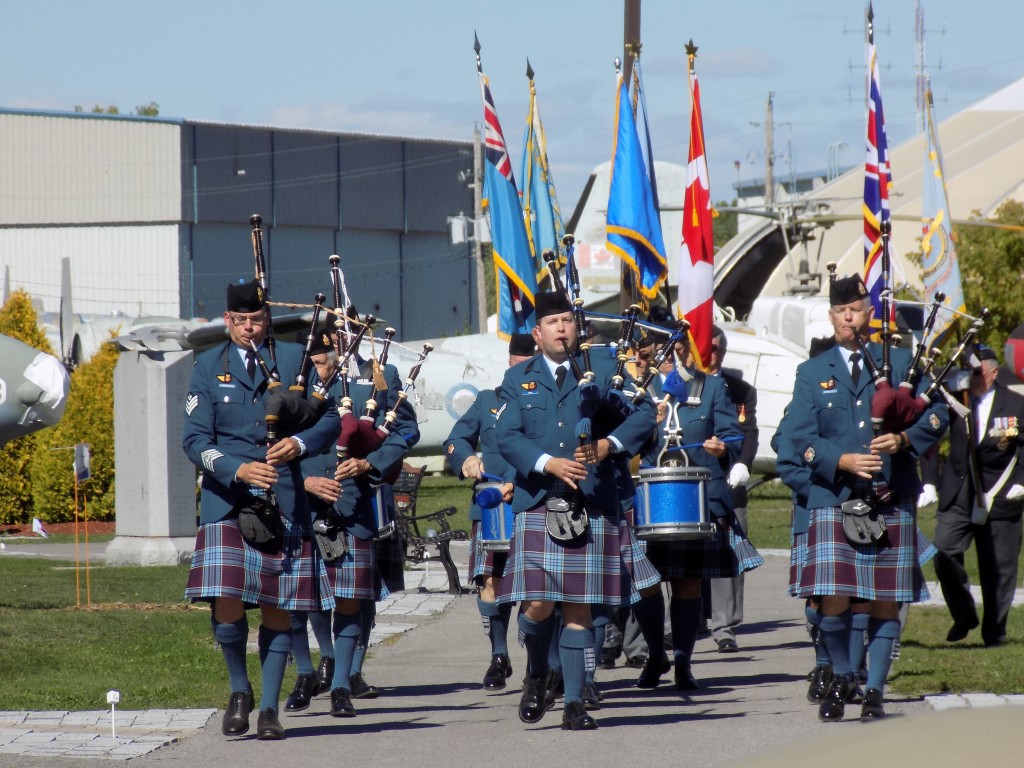
The 8 Wing (CFB Trenton) Pipes and Drums began the 2016 Ad Astra Ceremony. Their kilts are the official RCAF tartan. Photo by James Morgan
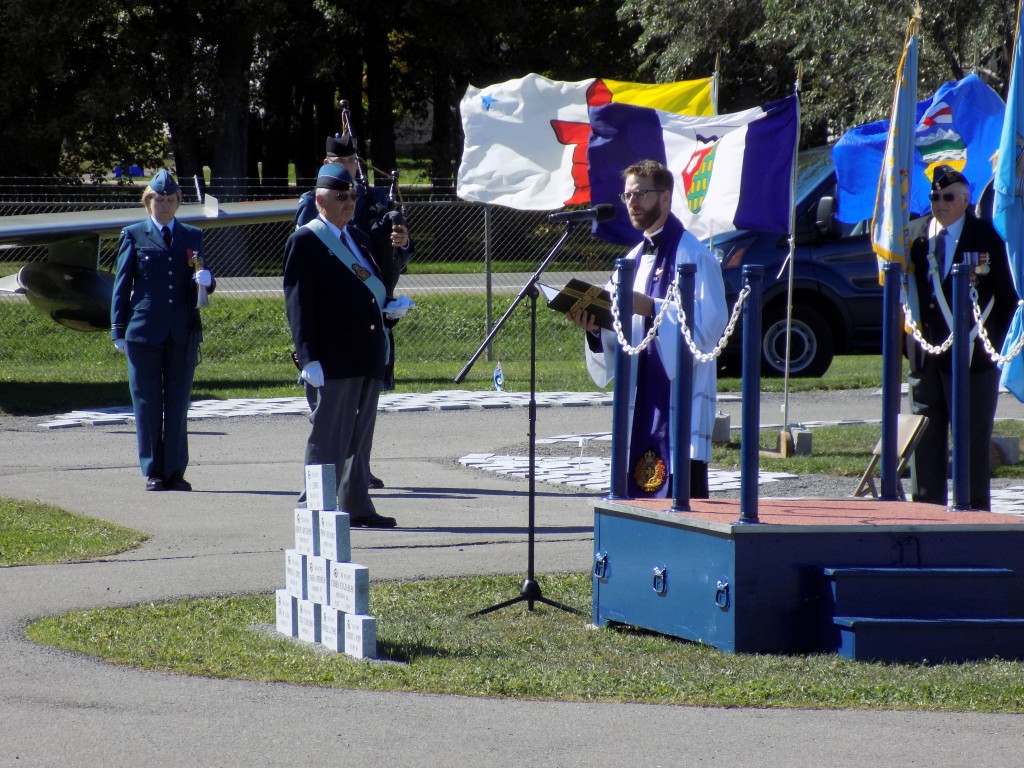
Chaplain Father Felix Roberge said the blessing prayer for the 2016 Ad Astra Stones. Photo by James Morgan
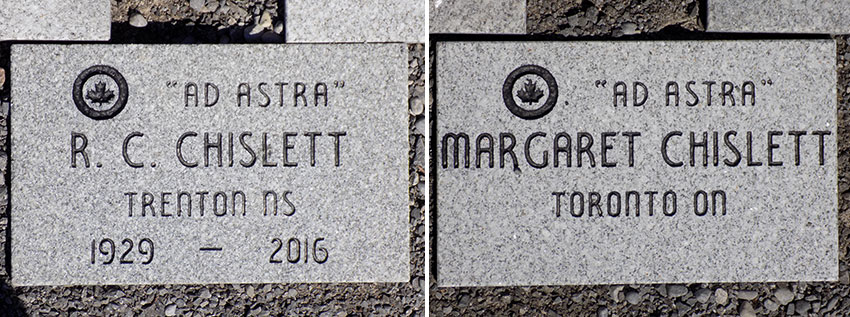
R.C. Chislett, born in Trenton, Nova Scotia, joined the RCAF in 1952 and served until 1977. The highlight of his career was spending nine years as a Flight Engineer, mostly on the 436 Transport Squadron. Margaret Chislett (nee Hawkins), born in New Zealand but mostly raised in Toronto served in the RCAF from 1953 to 1954. She worked in accounts payable. Photos by James Morgan
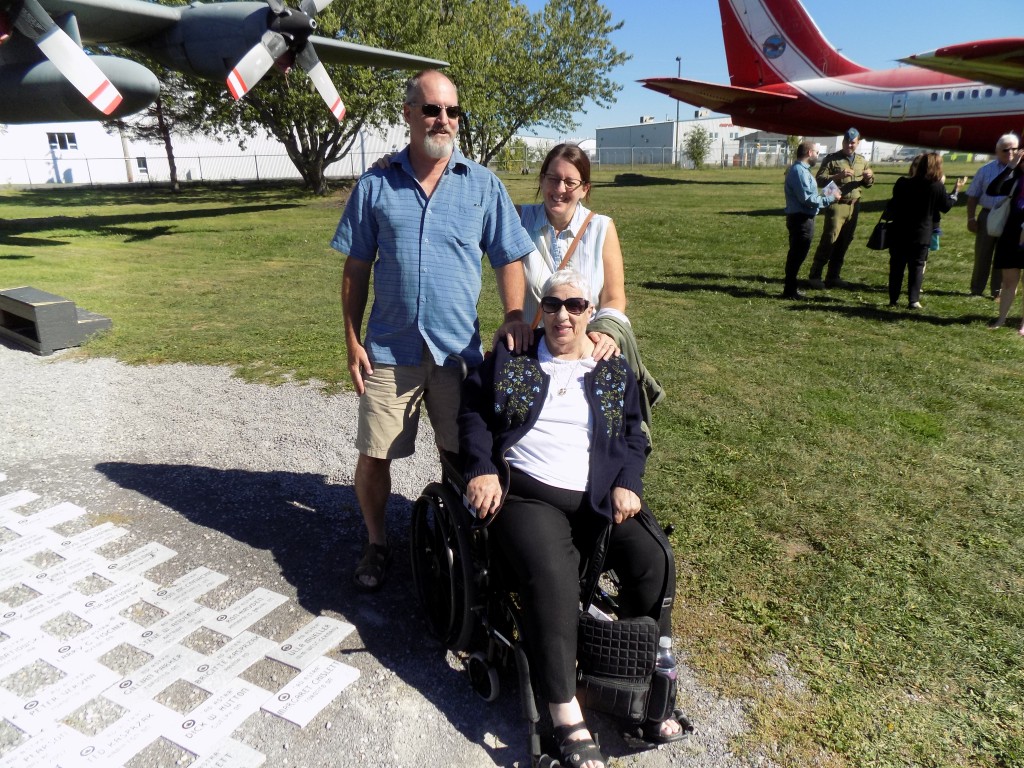
Nanny (seated) with my Uncle Bill and my Mom, Dodi next to her and Papa’s Ad Astra Stones. Absent was Uncle Doug who lives in Alberta. Photo by James Morgan
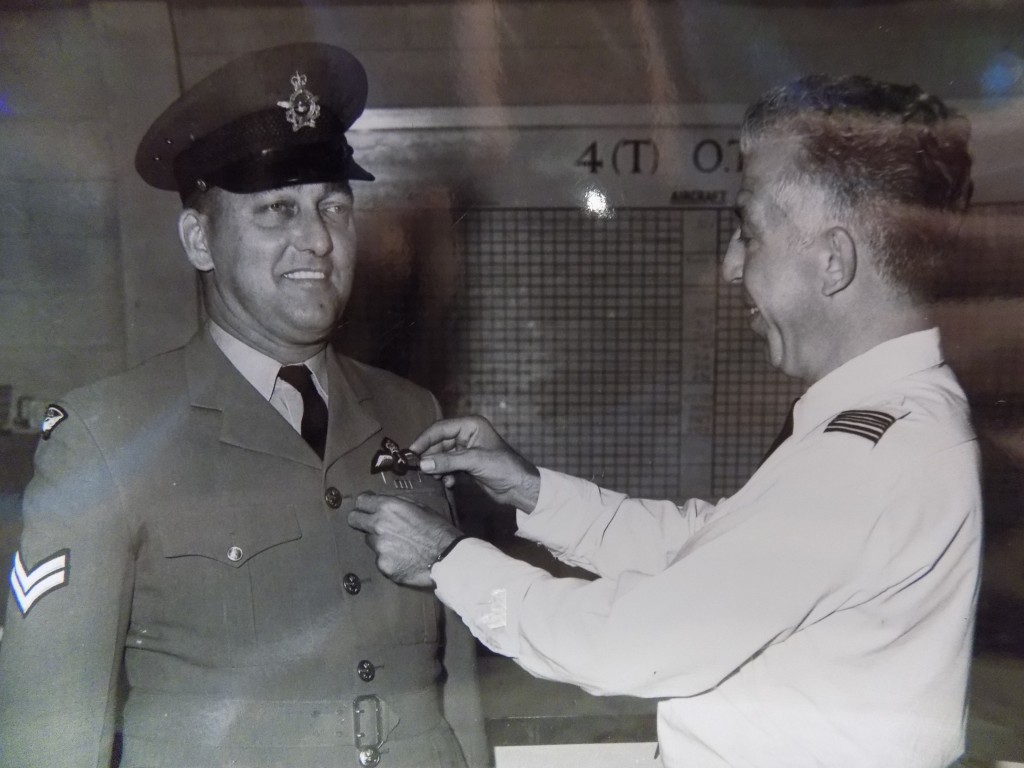
My grandfather (left), then a Corporal, receiving his Flight Engineer’s wings in approximately 1967.
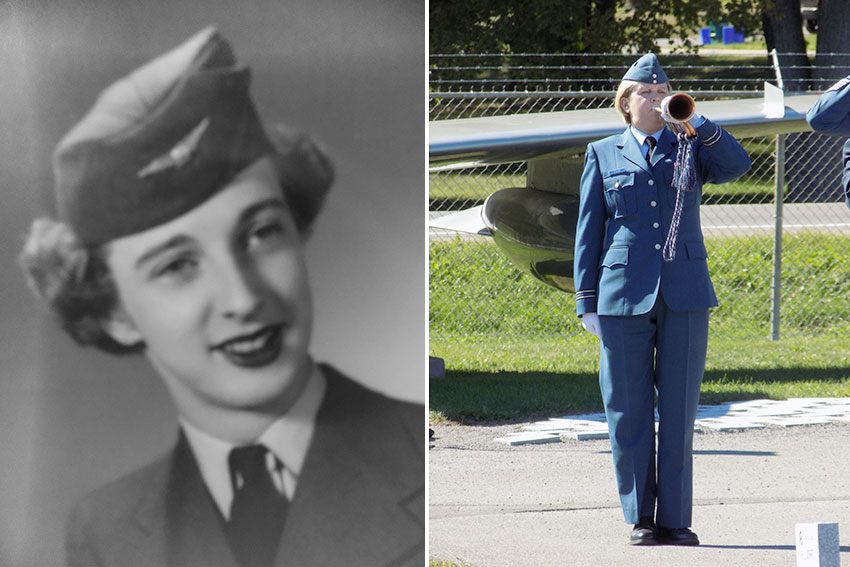
Left: Leading Aircraftwoman (LAW) Margaret Hawkins after completing basic training in 1953. She worked in accounts payable at RCAF Station Bagotville, Quebec. She had to leave the air force when she married my grandfather in 1954. The rules were different in those days. Right: A present-day female member of the RCAF played the bugle at the 2016 Ad Astra ceremony. Photo by James Morgan
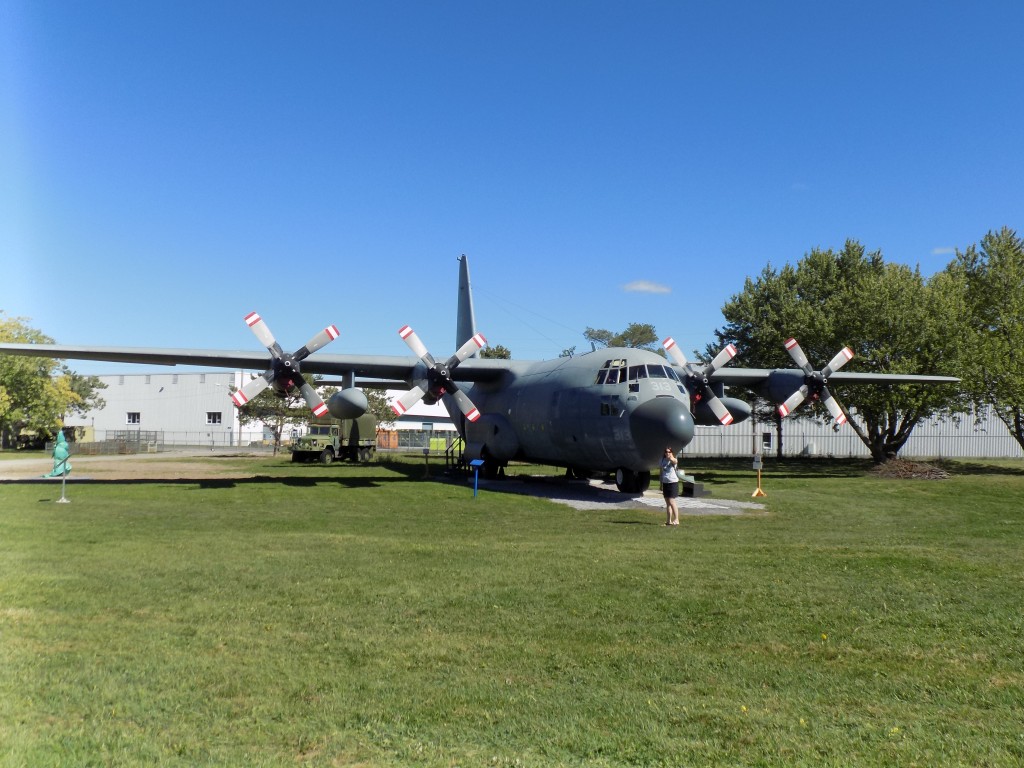
Retired C-130 Hercules 313, manufactured by Lockheed, at the National Air Force Museum of Canada. My sister Jessica is standing in front of it. Photo by James Morgan
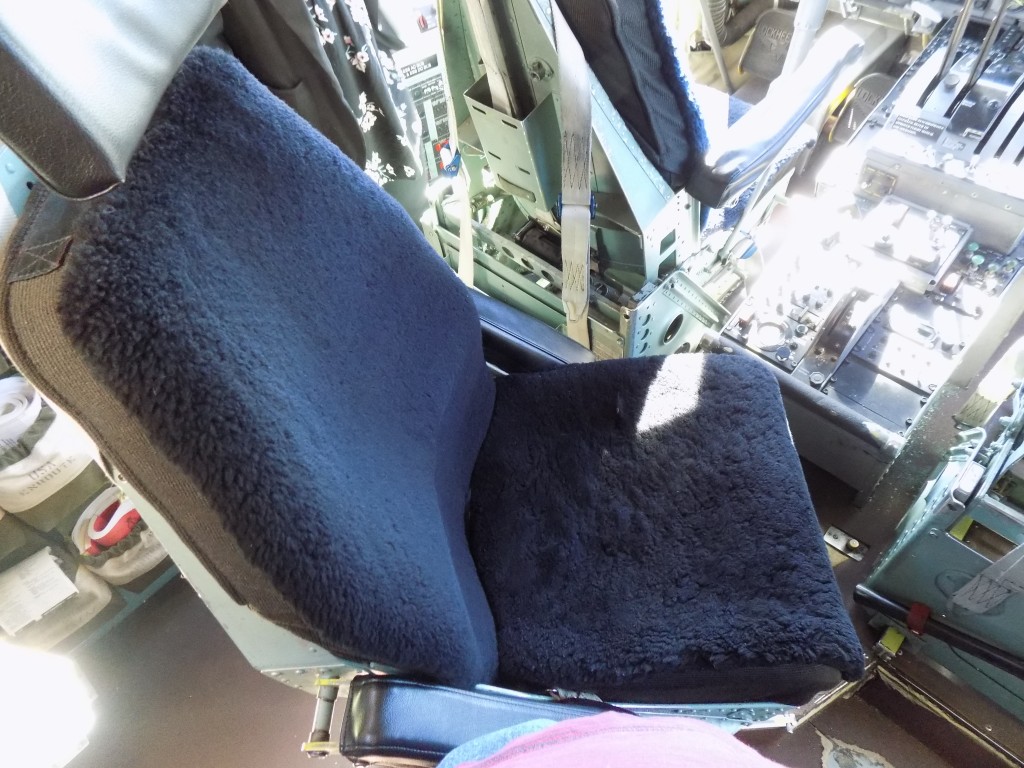
The Flight Engineer’s seat in the 313 cockpit, surrounded by dials, gauges, and levers. This was my grandfather’s seat, right behind the pilot and co-pilot. The Flight Engineer is basically the manager of the aircraft and is responsible for its orderly mechanical operation. Photo by James Morgan
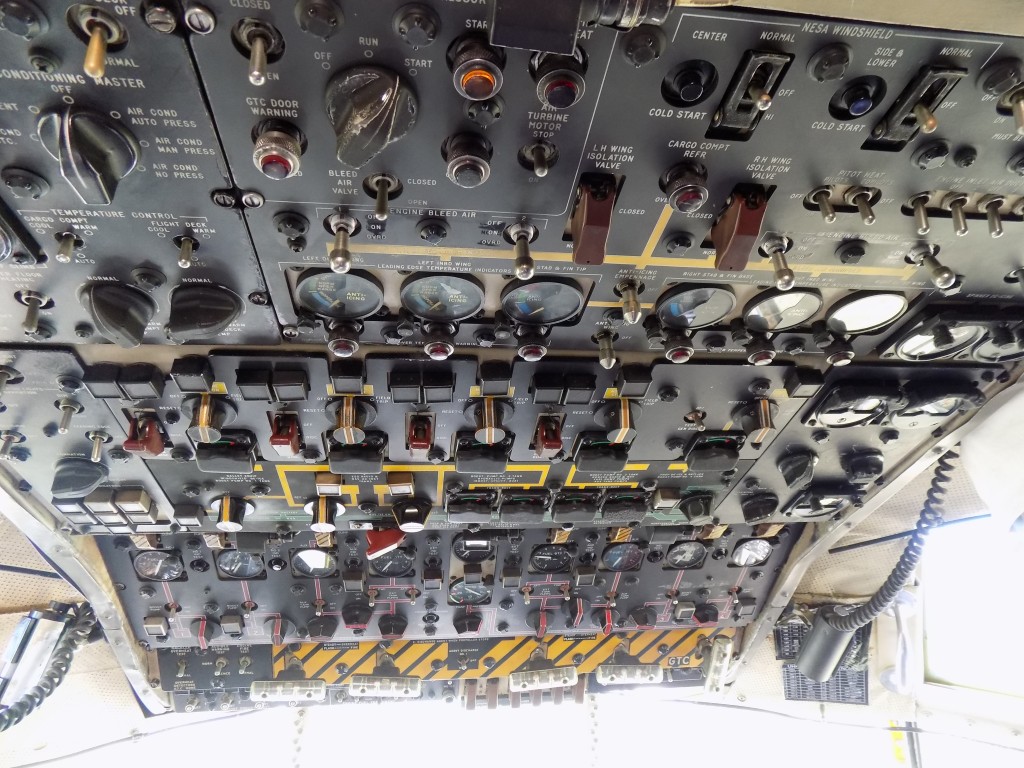
This control panel on the cockpit ceiling is just one of the many things a Flight Engineer like my grandfather was responsible for operating. Photo by James Morgan
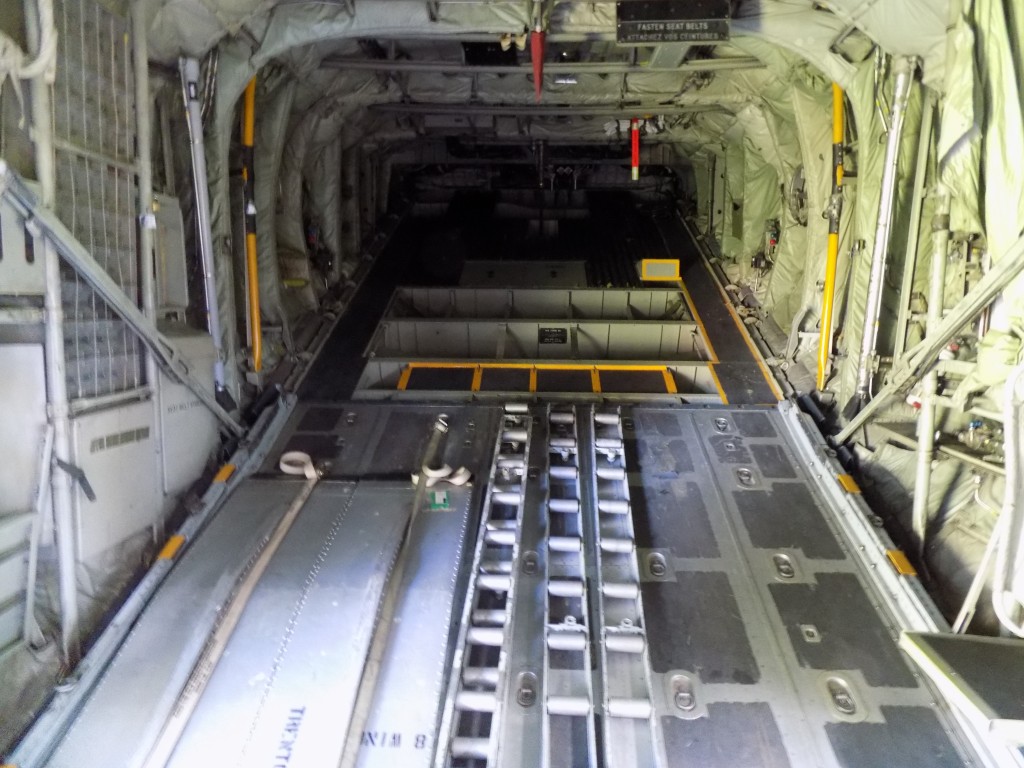
The cargo ramp at the rear of C-130 313. The RCAF has been using various models of the aircraft since 1960. They are used to carry everything from soldiers to vehicles and goods for humanitarian relief. Photo by James Morgan
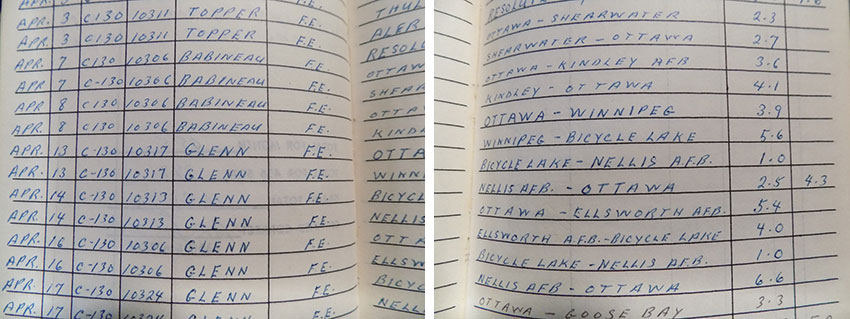
Sergeant R.C. Chislett’s log book from April, 1970. 436 Squadron was then located in Ottawa. The entries for April 13 and 14 show he was aboard 313, the C-130 Hercules now on display at the National Air Force Museum of Canada. Those 1970 trips included stops in Winnipeg, Manitoba, and the remote village of Bicycle Lake in the northern part of the province. Other destinations included Nellis Air Force Base in Nevada and Ellsworth AFB in South Dakota. Papa’s other international trips included extensive excursions to Europe, Africa, and Asia. Photos by James Morgan





